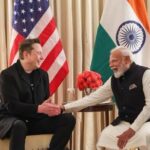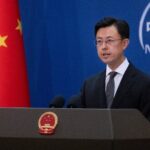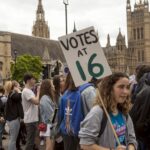Introduction
It was a day of spectacle and division. On a warm afternoon in the U.S. capital, tanks rolled down Constitution Avenue, fighter jets roared overhead, and uniformed troops marched in lockstep past cheering crowds and angry demonstrators. What some called a show of patriotism, others saw as a dangerous flirtation with authoritarianism.
President Donald Trump’s long-anticipated military parade — an event he’d envisioned since attending France’s Bastille Day celebration in 2017 — finally became reality. But it unfolded in a nation deeply polarized, with sharp contrasts in interpretation: was this a tribute to the armed forces, or a personal show of force by a leader who critics accuse of undermining democratic institutions?
This article takes a deep dive into the day’s events, the planning behind the parade, the fierce political reaction, and what it all means for America’s democracy and global image.
The Parade: A Show of Force
The parade, officially called “Salute to America,” began on the National Mall with the thunderous rumble of M1 Abrams tanks and Bradley Fighting Vehicles transported on flatbeds. U.S. Army units, Marines, Navy sailors, and Air Force squadrons participated in full uniform. As F-22 Raptors screamed overhead, the crowd looked skyward, many waving flags while others held protest signs.
A 21-gun salute fired from howitzers punctuated the ceremony, and a military band played patriotic music in front of the Lincoln Memorial, where President Trump took the stage to deliver a speech that blended historical reverence with assertive nationalism.
“Today, we celebrate the greatest military in the world and the brave men and women who defend our freedom,” Trump said. “We are one people, one nation, and we salute one American flag.”
While Trump avoided overt political attacks during the address, his critics noted that the entire event had the tone and aesthetics of a campaign rally cloaked in military grandeur.
The Planning and Costs
The idea for a U.S. military parade had been in Trump’s mind since his visit to France in 2017, where he witnessed the grand Bastille Day parade in Paris. Inspired, he instructed the Pentagon to plan a similar event — a move that raised eyebrows across party lines.
Originally estimated to cost $10–12 million, the final figure ballooned to over $30 million, according to Government Accountability Office reports. The funding covered transportation of military hardware, overtime pay for federal and city workers, security, and the massive logistical effort of coordinating the march.
Critics condemned the use of public funds, especially with the Department of Veterans Affairs still under budgetary scrutiny and infrastructure projects delayed across the country.
Supporters: “A Patriotic Celebration”
Many supporters of the event saw it as long overdue recognition for the U.S. military. Veterans and active service members in attendance expressed appreciation for the public spotlight and praised the commander-in-chief for putting the armed forces front and center.
“This isn’t about politics. It’s about honoring our heroes,” said Colonel Mark Gibbons (Ret.), who traveled from Georgia to witness the event. “Every nation shows off its strength. Why shouldn’t we?”
Trump allies defended the parade as apolitical, citing his careful avoidance of campaign rhetoric in the official speech. “It was a respectful and powerful salute to our country,” said Senator Tom Cotton of Arkansas.
Dissenters: “This Is Not America”
On the opposite end of the Mall, thousands gathered in protest. Groups like Veterans for Peace, Code Pink, and Indivisible organized counter-rallies with banners reading “No Tanks on Our Streets,” “Democracy Not Dictatorship,” and “Trump is Not a King.”
Civil liberties groups expressed concern over what they described as the “militarization of civilian space” and the use of armed forces as political props. Legal observers from the ACLU were on-site, monitoring police presence and possible violations of First Amendment rights.
“This kind of parade is something you’d expect in Russia or North Korea,” said protestor and Navy veteran Carlos Jimenez. “It sends the wrong message — that military might is a substitute for democratic values.”
The protest wasn’t just ideological. D.C. residents voiced frustration over blocked streets, damaged infrastructure from tank tracks, and the redirection of funds from local services.
Comparisons to Authoritarian Regimes
Much of the backlash focused on optics. Military parades in authoritarian regimes like North Korea, China, and Russia are often staged to project power and consolidate control. Trump’s decision to adopt a similar format raised alarms, especially given his previous praise for strongman leaders and his combative stance toward the media and judiciary.
Political commentators and editorial boards weighed in heavily. The Washington Post warned of “creeping militarism in the civic space,” while The New York Times questioned the precedent being set for future presidents.
Even some military leaders, speaking anonymously, expressed unease. “We’re not in the business of showcasing power for political theater,” said one retired general.
The Role of the Media
Coverage of the parade was as polarized as the nation itself. Conservative outlets like Fox News hailed it as “a proud and necessary display of American greatness.” Meanwhile, MSNBC, CNN, and The Guardian highlighted protest footage and editorialized against what they called “the Trumpification of the U.S. military.”
Social media was ablaze with viral images — tanks juxtaposed against protestors, children saluting jets, veterans being interviewed about their divided views. Hashtags like #TanksButNoThanks and #SaluteToAmerica trended simultaneously.
Global Reactions
The international community watched with curiosity — and some concern. Allies in Europe questioned the growing symbolism of Trump’s militarism, while state-run media in China and Russia aired footage of the parade with subdued commentary, perhaps appreciating the familiar pageantry.
In countries where military parades are annual tradition, such as India and France, the event was met with interest but not praise. “It’s one thing to honor the military,” said a former French diplomat. “It’s another to conflate it with political identity and power.”
What Does This Mean for America?
The parade laid bare the core tensions in today’s United States: nationalism vs. patriotism, authority vs. democracy, celebration vs. spectacle.
For some, the parade was a proud expression of American might and respect for its warriors. For others, it was a dangerous step toward authoritarian symbolism — using the military as a visual weapon in a political arsenal.
Beyond the debates, the parade has set a precedent. Future presidents may now feel emboldened to host similar displays. Whether that empowers American unity or fractures civic norms remains to be seen.
Conclusion
President Trump’s military parade will go down as one of the most controversial public events of his tenure — not for what was said, but for what was shown. Tanks rolled past monuments built to honor democratic ideals, while protestors shouted beneath jets designed to defend liberty abroad.
The imagery was powerful. The message? Still up for debate.
In a nation already torn between red and blue, soldier and civilian, spectacle and substance, the parade was less a celebration of unity and more a mirror of the moment — reflecting both America’s pride and its peril.






Самые оригинальные гелиевые шары с гарантией качества.
Доставка шары в Нижнем Новгороде [url=https://shariki-shop47.ru]https://shariki-shop47.ru[/url] .
стоимость часа охраны [url=https://rabochiy.site/]https://rabochiy.site/[/url] .
volunteers needed now [url=http://www.care-people-help.org]volunteers needed now[/url] .
[url=https://cvetyvmoscve.ru/]Заказать цветы с доставкой в Москве[/url]
Доставка цветов в Москве – это удобный способ порадовать близких. Множество компаний предлагают услуги доставки цветов в Москве, что дает возможность выбрать подходящий вариант.
Важно заранее решить, какой букет вы хотите заказать. Можно выбрать как традиционный букет, так и что-то необычное.
Не забывайте проверять сроки доставки и дополнительные опции, которые могут предложить сервисы. Некоторые компании предлагают сопровождение букета открытками или небольшими подарками.
Обращайтесь в надежные компании с хорошей репутацией и положительными отзывами. Такой подход исключит неприятные ситуации с качеством цветов и сроками доставки.
Идеальные источники бесперебойного питания для дома, в обзоре.
Рейтинг лучших ИБП, ознакомьтесь.
Почему стоит купить ИБП, в нашем материале.
Как выбрать ИБП для вашего оборудования, на нашем сайте.
Источники бесперебойного питания: что важно знать, разберитесь.
Советы по покупке источников бесперебойного питания, узнайте.
Ваш идеальный ИБП, в нашем гиде.
Технические аспекты ИБП, на нашем сайте.
Советы по использованию ИБП, в этой статье.
Что нового в мире ИБП, в этой статье.
Правила подключения источника бесперебойного питания, на сайте.
Как выбрать ИБП для разных нужд, узнайте.
Источники бесперебойного питания: советы и хитрости, читайте.
Рейтинг популярных источников бесперебойного питания, ознакомьтесь.
Советы по монтажу источников бесперебойного питания, в статье.
Что выбрать: ИБП или альтернативу?, в гиде.
Как продлить срок службы ИБП, получите советы.
Как выбрать ИБП для игры, в нашем обзоре.
Что учесть при выборе источника бесперебойного питания, узнайте.
источники бесперебойного питания купить [url=http://istochniki-bespereboynogo-pitaniya.ru/#источники-бесперебойного-питания-купить]http://istochniki-bespereboynogo-pitaniya.ru/[/url] .
Хризантемные букеты с доставкой по Москве без дополнительных затрат — это отличное решение для всех, кто хочет порадовать близких. Хризантемы привлекают внимание своим многообразием и элегантностью. С их помощью можно создать изысканные композиции.
[url=https://hrizantemymsk.ru/]Букеты из хризантем с бесплатной доставкой по Москве[/url]
Мы предлагаем разнообразные варианты цветочных композиций. Каждая цветочная композиция собирается с любовью и заботой. Мы ценим уникальность вашего подарка, и наши букеты это подчеркивают.
Оформите заказ через интернет и выберите подходящее время для получения букета. Мы обеспечим доставку вашего букета своевременно и качественно. Мы следим за тем, чтобы букеты доходили до клиентов свежими и красивыми.
Выбирая хризантемные букеты, вы дарите себе и близким радость и красоту. Не упустите возможность порадовать своих близких цветами. Мы готовы предложить вам лучшие варианты на любой случай жизни.
Свадебный букет из гортензий с бесплатной доставкой по Москве — это отличное решение для тех, кто хочет удивить своих близких. Гортензии в букете символизируют любовь и дружбу, что делает их идеальными для подарка.
[url=https://gortenziimsk.ru/]Букет гортензий с бесплатной доставкой в Москве[/url].
Доступная доставка букета гортензий осуществляется в любую точку города. Каждый букет гортензий создается мастерами флористики с любовью и вниманием.
Гортензии прекрасно дополняют любые цветочные композиции и подходят для различных случаев. Эти цветы могут стать стильным акцентом в вашем доме, радующим глаз каждый день.
Не забывайте, что красивые цветы — это отличный способ выразить свои чувства. Заказать букет гортензий с бесплатной доставкой можно всего лишь в несколько кликов.
Лучшие скины на рынке, в этом разделе.
Не пропустите, удивят.
каталог, продаются.
на нашем сайте.
на выгодных условиях.
игроков.
Открывайте.
с самыми интересными скинами.
в онлайн-коллекции.
Получите, удовлетворят ваши желания.
разнообразные скины, по вашему выбору.
информацию о скинах.
коллекционные товары.
продать свои скины, чтобы не упустить возможности.
Следите за, дадут вам возможность.
исключительными предметами, которые будут выделять вас.
Выбирая нас, доступные цены.
самые желанные скины, по доступной цене.
compare skins [url=https://superskinscs.com/#compare-skins]https://superskinscs.com/[/url] .
Получение разрешения на работу, для соискателей, обязательно нужно знать.
Как получить разрешение на работу за границей, для тех, кто планирует.
Разрешение на работу: основные требования, что нужно учитывать.
Подробности о продлении разрешения на работу, по юридическим вопросам.
Разрешение на работу для студентов, проверенная информация.
Ошибки при получении разрешения на работу, советы от экспертов.
Как получить разрешение на работу за границей: международный опыт, требования.
Документы для получения разрешения на работу, ознакомьтесь документы.
Как получить разрешение на работу без отказа, важные советы.
Разрешение на работу: права и обязанности работника, подробности.
Как долго ждать разрешение на работу, все о сроках.
Как фрилансеру получить разрешение на работу, рекомендации.
Проверка готовности разрешения на работу, все способы.
Как получить разрешение на работу родителям-одиночкам, необходимая информация.
Как подготовиться к интервью за разрешение на работу, все нюансы.
Разрешение на работу и налоги, важные аспекты.
Как получить разрешение на работу инвалидам, рекомендации.
Оплата услуг по получению разрешения на работу, финансовые аспекты.
Как переехать за границу с разрешением на работу, необходимые шаги.
Как получить разрешение на работу в условиях кризиса, что учитывать.
дали разрешение на работу [url=http://oformleniernr.ru/#дали-разрешение-на-работу]http://oformleniernr.ru/[/url] .
Если вам хочется не просто быстро пролистать новости, а остановиться, подумать и, может, даже немного переосмыслить привычные вещи — этот профиль будет хорошим спутником
https://rusere.ru/communication/club/user/7055/forum/message/7985/9459/#message9459
ремонт телевизоров тошиба [url=https://toshiba-servisnyj-centr.ru/]ремонт телевизоров toshiba[/url] – профессиональный ремонт с гарантией качества.
If you’re passionate about unique hairstyles, then [url=http://dreadlocksart.com/curly-dreadlocks/]buy synthetic dreadlocks[/url]
is your go-to shop. This online store specializes in all kinds of dreadlock styles, especially curly dreadlocks, handcrafted for a natural and flawless look.
You’ll find top-notch curly dread extensions made from safe, lightweight fibers — perfect for both daily wear and special events. Whether you’re aiming for a soft beachy vibe with wavy hair dreads, or prefer defined, voluminous looks like
curly end dreads, the variety is impressive.
Many clients choose styles like curly hair dreads to highlight their facial features and add volume. Options such as wavy locs are ideal for quick installs, while dreadlocks for sale near me make this shop perfect for U.S. customers looking for convenience and speed.
Not sure what to pick? Popular collections include dreadlocks for girls, or even vibrant and bold designs like synthetic ombre styles.
For those wondering [how long do curly dreads last], you’ll find detailed care instructions and options for lightweight curly sets — all reviewed by happy customers.
The store also offers localized options such as wavy dreadlock extensions near me, helping you find styles with fast delivery and easy tracking.
When you’re ready to transform your look, don’t settle for average — choose [url=http://dreadlocksart.com/curly-dreadlocks/]thick synthetic dreads[/url] for unmatched quality, variety, and style that reflects your identity.
[url=https://mneploho.net/clubs/538_gde-zakanchivaetsja-gorod-i-nachinaetsja.html]Статья здесь[/url]
Попытка автора проанализировать социальные аспекты индустрии эскорт-услуг оказывается совершенно неудачной из-за полного отсутствия научного подхода и достоверных данных. Статья содержит исключительно умозрительные заключения без какой-либо фактологической базы.
Как работать с контроллерами Siemens, для опытных специалистов.
Советы по программированию контроллеров Siemens, разоблачаем.
Преимущества TIA Portal в программировании контроллеров Siemens, все, что вам нужно знать.
Типичные ошибки в программировании, освойте.
Проектирование автоматизации с контроллерами Siemens, советы.
Топ контроллеров Siemens на рынке, для вашего проекта.
Сравнение языков программирования для контроллеров Siemens, для оптимизации.
Как контроллеры Siemens помогают в автоматизации, кейсы.
Будущее контроллеров Siemens, в 2025 году.
Создание интерфейсов для управления с помощью Siemens, для повышения эффективности.
Программирование контроллеров [url=https://www.programmirovanie-kontroller.ru/#Программирование-контроллеров]https://www.programmirovanie-kontroller.ru/[/url] .
nnxkb7
цены на услуги охраны [url=http://rabochiy.site]http://rabochiy.site[/url] .
[url=https://tokarnye-stanki-s-chpu.ru/]мини токарный станок с чпу по металлу купить[/url] — это современное оборудование для точной обработки металла и дерева.
Такое оборудование обеспечивает точное и быстрое изготовление деталей из различных материалов.
Применение ЧПУ сокращает время производства и уменьшает количество брака. Такие технологии нашли применение в производстве инструментов, деталей и сложных конструкций.
#### **2. Принцип работы токарных станков с ЧПУ**
Управление процессом осуществляется через компьютер, который передает команды механическим узлам.
Система обратной связи позволяет корректировать работу станка в режиме реального времени. Таким образом, достигается высокая повторяемость деталей и минимальные отклонения от чертежа.
#### **3. Преимущества токарных станков с ЧПУ**
Основным преимуществом является возможность выполнения сложных операций без ручного вмешательства.
Программное управление минимизирует ошибки и повышает эффективность работы. Дополнительным плюсом является возможность быстрого перехода на выпуск новых изделий.
#### **4. Перспективы развития токарных станков с ЧПУ**
Развитие технологии приведет к созданию более умных и автономных систем.
Подключение к цифровым платформам даст возможность оптимизировать работу станков в режиме онлайн. Это откроет новые возможности для промышленности и ускорит переход к «умным» заводам.
—
### **Спин-шаблон:**
#### **1. Введение в токарные станки с ЧПУ**
Современное производство сложно представить без токарных станков с ЧПУ. Эти устройства позволяют выполнять высокоточную обработку металлических и неметаллических заготовок.
Автоматизация токарных работ минимизирует человеческий фактор и ускоряет выполнение задач. Подобные агрегаты востребованы в автомобильной, медицинской и энергетической сферах.
*(Шаблон продолжается аналогично для всех последующих разделов.)*